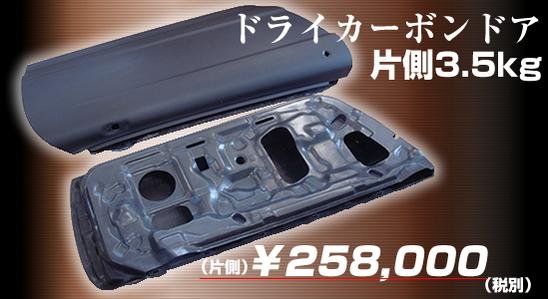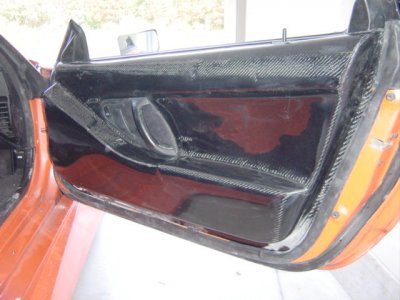I did a price check on a set of autoclaved dry carbon NSX doors for Danny (Mr.1000.9 RWP) due to his eternal quest to shed weight on his beloved NSX. I just want to find out if any one else is interested.
It is not cheap but will save you some serious weight. Great for track cars, or bragging rights. Keep in mind that this is Autoclaved Dry Carbon, manufacture method similar to Enzo, F50, McLaren F1, etc.
The price quote is 525000 Yen plus shipping, including JDM tax. Four panels total.
Does not include shipping, which I suspect will be some where around $300. I will find out more detail next coupe of days.
There is also money wiring fee of $50 (send) and $50 (receiving), which will split between the buyers if the money is to be wired at the same time. You can also send the money your self (but you will need to pick up the entire wiring fee); I will provide the information.
While at it, my friend also ask me to post this product. Wet carbon inner door panel.
23000 yen for the set excluding shipping.
However, I haven't heard from him about LHD and RHD version. So again, I'll keep you guys posted when I get the information.
It is not cheap but will save you some serious weight. Great for track cars, or bragging rights. Keep in mind that this is Autoclaved Dry Carbon, manufacture method similar to Enzo, F50, McLaren F1, etc.
The price quote is 525000 Yen plus shipping, including JDM tax. Four panels total.
Does not include shipping, which I suspect will be some where around $300. I will find out more detail next coupe of days.
There is also money wiring fee of $50 (send) and $50 (receiving), which will split between the buyers if the money is to be wired at the same time. You can also send the money your self (but you will need to pick up the entire wiring fee); I will provide the information.
While at it, my friend also ask me to post this product. Wet carbon inner door panel.
23000 yen for the set excluding shipping.
However, I haven't heard from him about LHD and RHD version. So again, I'll keep you guys posted when I get the information.
Attachments
Last edited:







